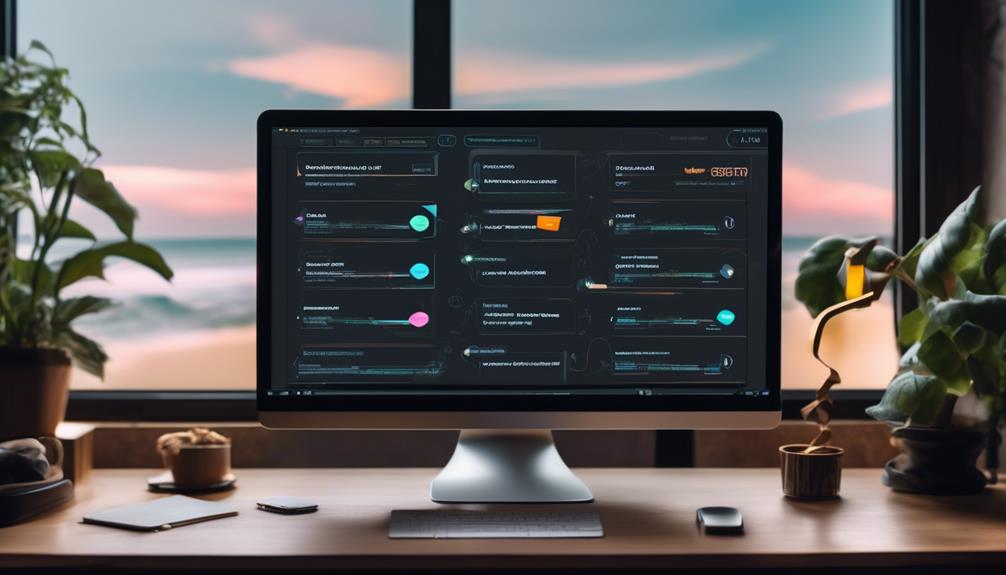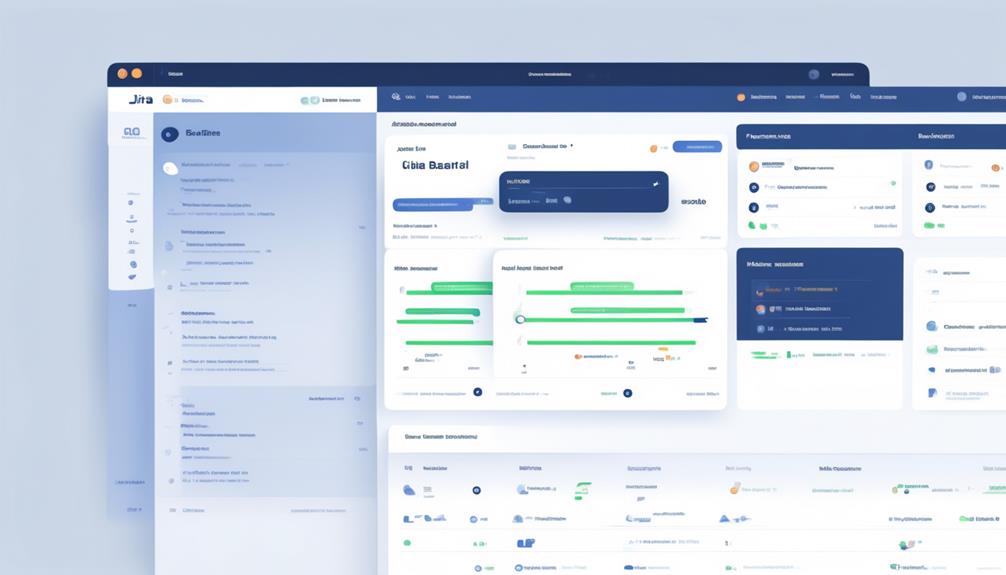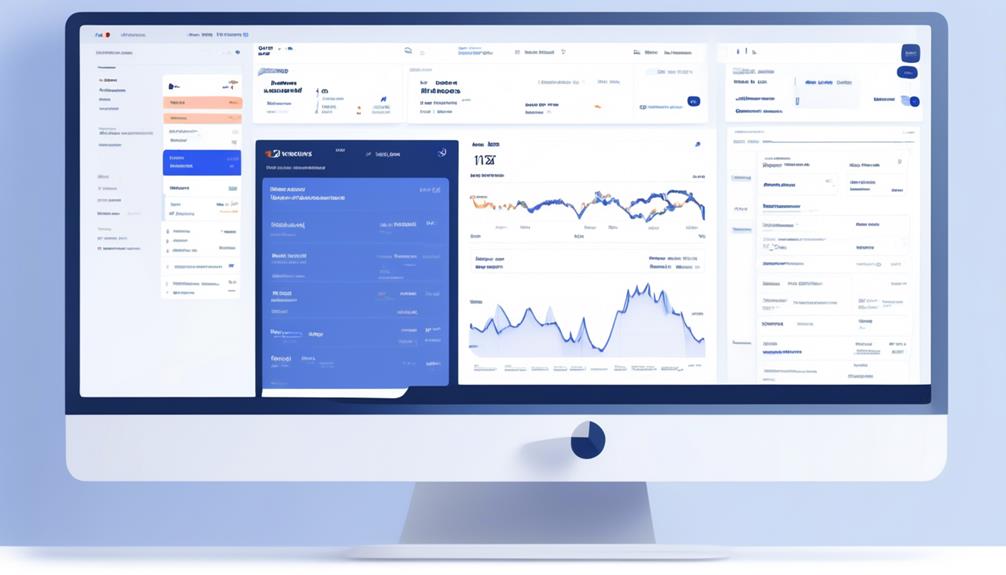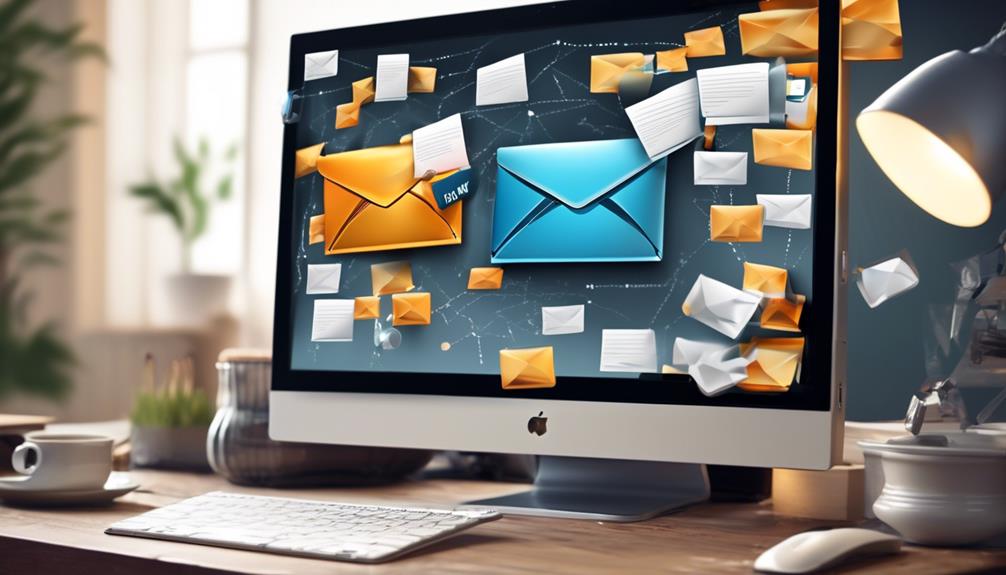In the realm of email marketing, time equates to financial gain, and ClickUp Email Automation epitomizes the proverb that ‘time is of the essence.’
It's no secret that automating repetitive tasks can significantly enhance productivity and streamline workflows. But what if I told you there's more to it than just saving time?
The concept of ClickUp Email Automation extends far beyond simply sending out scheduled emails. It's about transforming the way we engage with our audience, tailoring our messaging to specific triggers, and ultimately optimizing our email marketing strategy in ways we may not have previously considered.
Key Takeaways
- Email automation is a powerful tool for businesses to send timely, personalized, and relevant emails to subscribers based on specific triggers and actions.
- Email automation saves time and effort by eliminating manual input and allows for a more efficient use of resources.
- Email automation contributes to improved engagement, customer satisfaction, conversion rates, and customer retention.
- ClickUp email automation offers customizable workflows, trigger options, and variable field options to create meaningful connections and enhance communication with subscribers.
What Is Email Automation?
Email automation is a self-regulating workflow that sends timely, personalized, and relevant emails to subscribers based on specific triggers and actions. Triggers, like form submissions or app interactions, automatically send emails, ensuring highly personalized messages without extra effort.
Ecommerce marketers greatly value email automation for its capability to send hyper-relevant messages, meeting subscribers at the right place and time with the correct information. This not only improves customer satisfaction but also drives sales and saves time by automating repetitive tasks.
Automated email campaigns, including behavioral emails and drip campaigns, establish brand credibility and thought leadership. By relying on triggers to determine when to send emails, automated emails allow for targeted messages with prompts to encourage desired behavior and personalized interactions with recipients.
This level of personalization and relevance isn't easily achievable through manual email processes, making email automation an indispensable tool for modern businesses seeking to engage and nurture their audience effectively.
Benefits of Automation
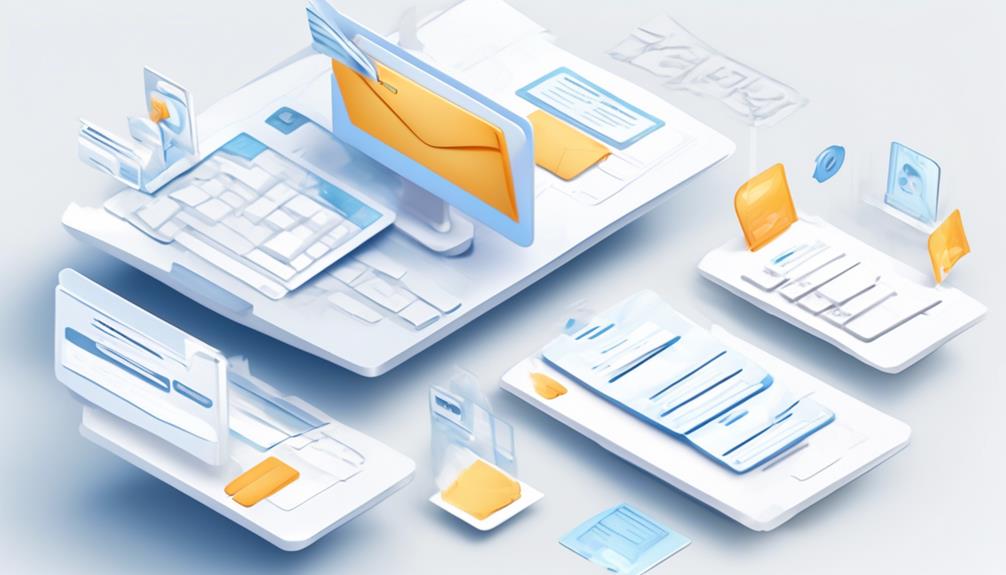
Transitioning from the discussion on email automation, the benefits of automation are evident in the time and effort saved through streamlined workflows and increased efficiency.
With email automation, manual input is eliminated, allowing for a more efficient use of time and resources. By automating the sending of emails, marketers can free up valuable time that can be redirected to other important tasks, thus enhancing overall productivity.
Moreover, email automation enables personalized and relevant communication with subscribers, leading to improved engagement and satisfaction. By tailoring automated emails based on user interactions, businesses can effectively nurture leads, drive sales, and enhance customer loyalty. This not only saves time and effort but also contributes to the bottom line by improving conversion rates and customer retention.
In essence, the benefits of email automation extend beyond time and effort savings to encompass enhanced customer satisfaction, streamlined workflows, and increased productivity, making it an indispensable tool for modern businesses.
How Email Automation Works
With the use of triggers and targeted messages, email automation operates by sending timely and relevant emails to subscribers based on specific actions or behaviors.
Triggers, such as form submissions or app interactions, prompt the automated system to deliver personalized messages that cater to the recipient's interests and needs.
By leveraging incentives or gentle nudges, email automation encourages desired behavior and fosters engagement with the audience.
This process not only streamlines marketing workflows but also increases efficiency by reducing the need for manual effort.
Clickup email automation, with its focus on triggers and targeted messaging, offers a powerful tool for businesses to create meaningful connections with their subscribers.
Understanding how email automation works empowers marketers to deliver impactful content that resonates with their audience, ultimately driving desired actions and outcomes.
Creating an Email Workflow
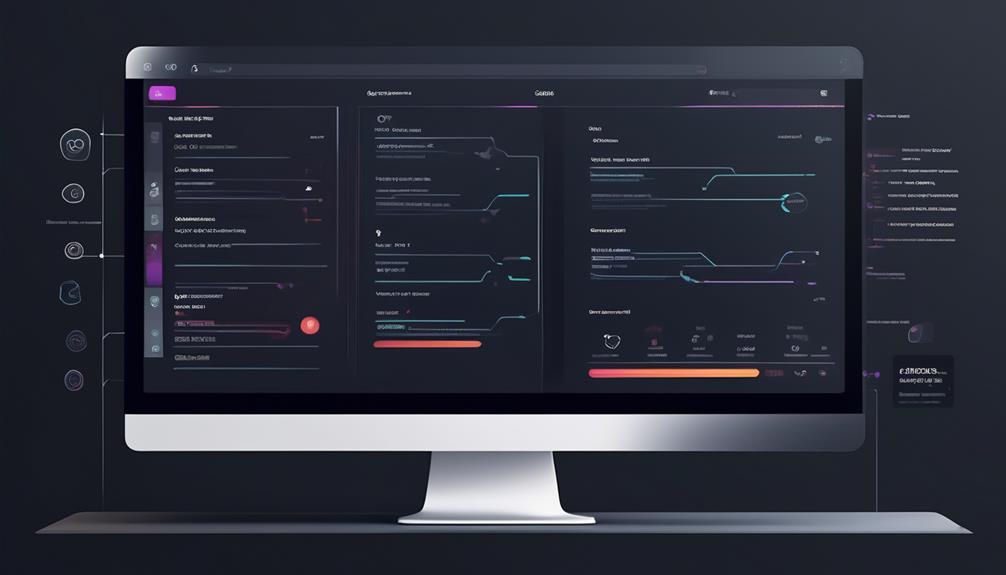
Let's talk about how to create an email workflow in Clickup.
We'll cover important points such as email triggers, automated responses, and workflow customization.
These aspects are essential for streamlining communication and optimizing productivity within the platform.
Email Triggers
Email triggers in Clickup allow for the seamless automation of email workflows, enhancing productivity and efficiency for business plans and above.
To create an email automation, navigate to the relevant Space, Folder, or List. Click on Automations and select Email in the left sidebar. Choose an email automation to enter the required information.
Variable field options enable the addition of dynamic content to the email automation's subject or body. This can be done using custom fields like Progress, Formula fields, and Relationship columns.
When sending an email triggered by a Form creating a task, create an automation specific to the task's origin. Select the Task created Trigger, choose the Send email Action, and customize the automated email in the Action section.
Troubleshooting email automations may involve removing and re-adding the email account used. It may also require following troubleshooting steps, ensuring authentication of the email account, and seeking further assistance if problems persist.
Automated Responses
Enabling automated responses through email workflows can significantly improve efficiency and streamline communication processes within Clickup.
When setting up automated responses, it's essential to ensure the Automation and Email ClickApps are enabled by the workspace admin or owner. The process involves navigating to the relevant space, folder, or list, clicking on Automations, selecting Email in the left sidebar, and entering the required information for the chosen email automation.
Variable field options allow for dynamic content addition to the subject or body of the email automation, using custom fields other than Progress (auto), Formula fields, and Relationship columns.
Specific automations for tasks created from Forms should be created to send emails when a Form creates a task, specifying triggers, actions, and customized content for the automated email.
Troubleshooting email automations involves steps like removing and re-adding the email account, authenticating the email account, seeking further assistance if problems persist, and reviewing helpful tips and information.
Workflow Customization
To create an email workflow in Clickup, follow these steps:
- Navigate to the relevant Space, Folder, or List.
- Access the Automations feature to begin customization.
- Enable Automation and Email ClickApps.
- Customize the email with dynamic content options such as custom fields and relationship columns to meet specific workflow needs.
For tasks created from Forms:
- Configure email triggers.
- Select the Task created Trigger.
- Choose the Send email Action.
If you encounter any issues with email Automation:
- Re-add the email account used.
- Seek assistance if problems persist.
Mastering workflow customization in Clickup's email automation involves understanding these steps and utilizing the available customization options to tailor email workflows to the unique requirements of the project or team.
Setting Triggers
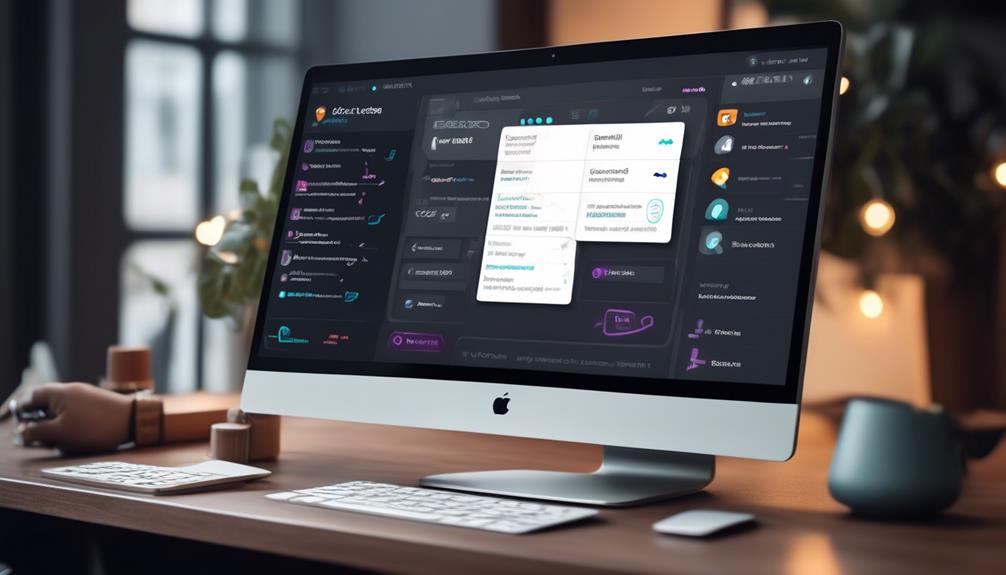
When it comes to setting triggers in Clickup Email Automation, there are various options available to customize workflows. These trigger options allow us to define specific conditions that prompt automated email sending, ensuring that the right audience receives the right messages at the right time.
Trigger Options
Setting triggers for email automation in Clickup allows for precise timing and audience targeting of automated email messages.
When setting triggers in Clickup for email automation, we have various options to choose from, including specific actions or behaviors such as form submissions or task events.
Triggers play a crucial role in initiating the automated email workflows, ensuring that the right messages are sent at the right time. These triggers can prompt desired actions through incentives or gentle nudges in the automated emails, making the communication more effective.
By leveraging trigger options, Clickup email automation streamlines the email marketing workflow, enhancing efficiency, and reducing manual effort.
Mastering trigger emails in Clickup can significantly optimize your email marketing strategies.
Workflow Customization
By customizing our workflow, we can precisely target our audience with automated email messages based on specific actions or behaviors. With Clickup email automation, workflow customization allows us to set triggers for automated email sending based on various actions such as form submissions, task creations, or other app interactions. These customizable triggers enable us to send targeted and timely emails to the right audience, reducing manual effort and increasing efficiency by eliminating the need for manual input.
This level of customization in workflow automation not only saves time but also ensures that personalized and relevant emails are sent automatically, freeing up valuable time for other essential tasks. Overall, workflow customization plays a pivotal role in streamlining the email automation process and enhancing audience engagement.
Scheduling Email Series
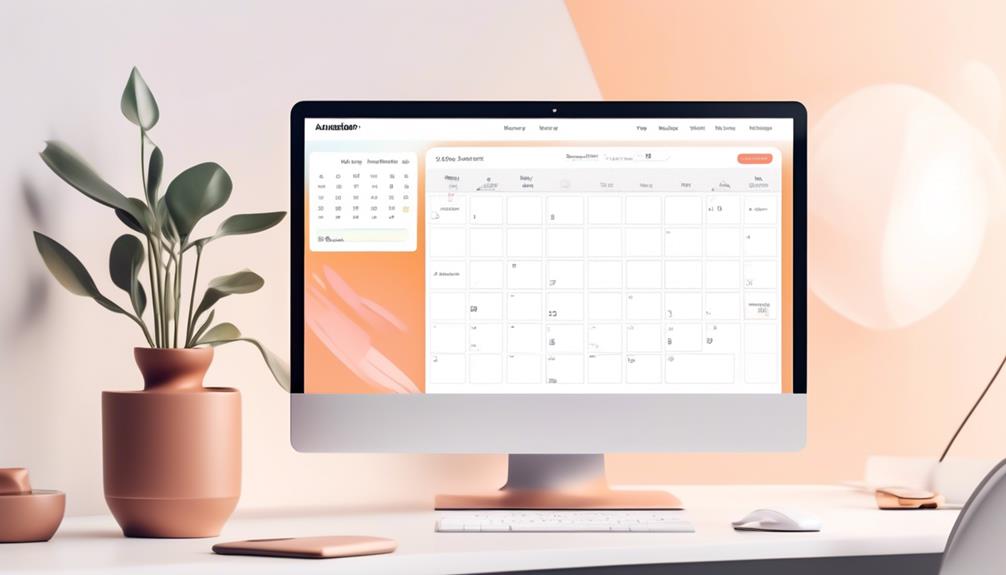
To effectively engage subscribers and nurture leads, Clickup Email Automation offers the feature of Scheduling Email Series, enabling the strategic planning and delivery of automated email sequences at specific times.
With Scheduling Email Series, we can create a seamless and targeted communication strategy by leveraging the following capabilities:
- Plan and send a series of emails at specific times to subscribers, ensuring timely delivery of content.
- Set up automated email sequences to nurture leads, engage customers, or deliver content in a timely manner.
- Create a strategic email marketing campaign that delivers relevant content over a predefined schedule, enhancing audience engagement.
- Flexibility to schedule emails based on triggers, such as user actions or specific dates, ensuring personalized and targeted communication.
- Streamline the process of delivering a sequence of emails, saving time and effort while maintaining consistent and effective communication with the audience.
Scheduling Email Series not only simplifies the process of delivering email sequences but also empowers us to provide valuable and timely content to our subscribers, ultimately enhancing our email automation capabilities.
Use Case Examples
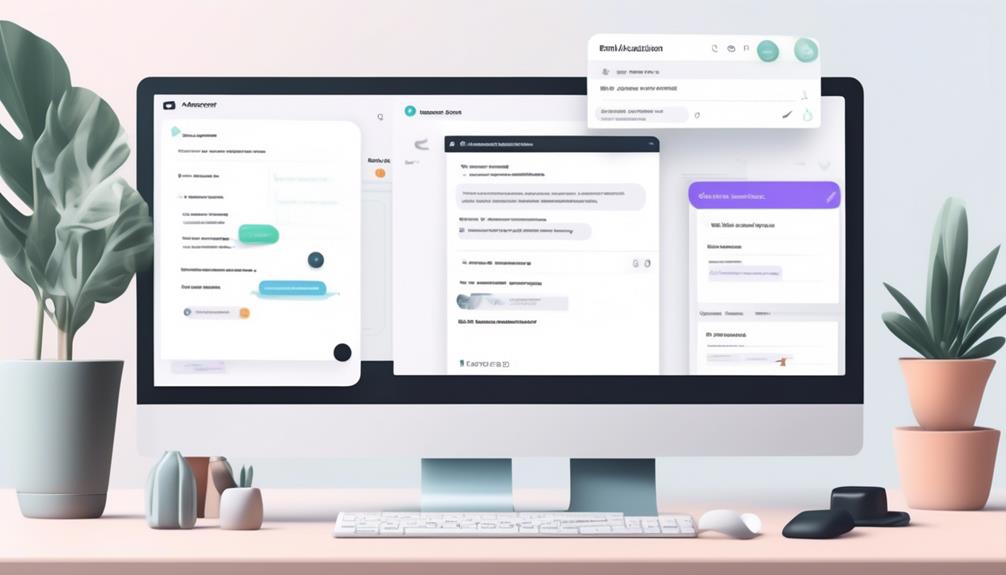
Let's explore some use case examples for email automation and the benefits they bring to our workflows.
We'll discuss the efficiency gained from automating tasks such as sending reminders, feedback requests, and promotional offers.
These examples will showcase how email automation can streamline our processes and enhance our communication with customers.
Benefits of Automation
Automated email campaigns have proven to significantly boost customer engagement and retention, leading to notable increases in sales and brand loyalty.
The benefits of email automation include:
- Streamlining the workflow, increasing efficiency, and reducing manual effort
- Enabling automated sending of emails, freeing up time for other important tasks
- Crafting effective emails, scheduling them, and monitoring their performance with ClickUp
- Triggering automated emails based on specific actions or behaviors, such as form submissions or app interactions
- Driving sales, improving customer satisfaction, and establishing brand credibility
These benefits showcase the power of email automation in enhancing customer relationships and driving business growth.
Efficiency in Workflows
Efficiency in workflows can be exemplified through real-world scenarios where email automation has streamlined processes and improved productivity. For instance, in a sales department, automating lead nurturing emails can significantly reduce manual effort and time spent on repetitive tasks. Meanwhile, in customer support, automated response emails can ensure timely communication with clients, enhancing satisfaction and response rates. Below is a table highlighting the impact of email automation on workflow efficiency:
| Workflow Stage | Manual Process | Automated Process |
|---|---|---|
| Lead Nurturing | Manual tracking of leads and follow-ups | Automated lead scoring and personalized email sequences |
| Customer Support | Manually categorizing and responding to inquiries | Automated ticket assignment and personalized response templates |
Implementing ClickUp email automation has the potential to transform various workflow stages, leading to increased efficiency and productivity.
Welcome Emails
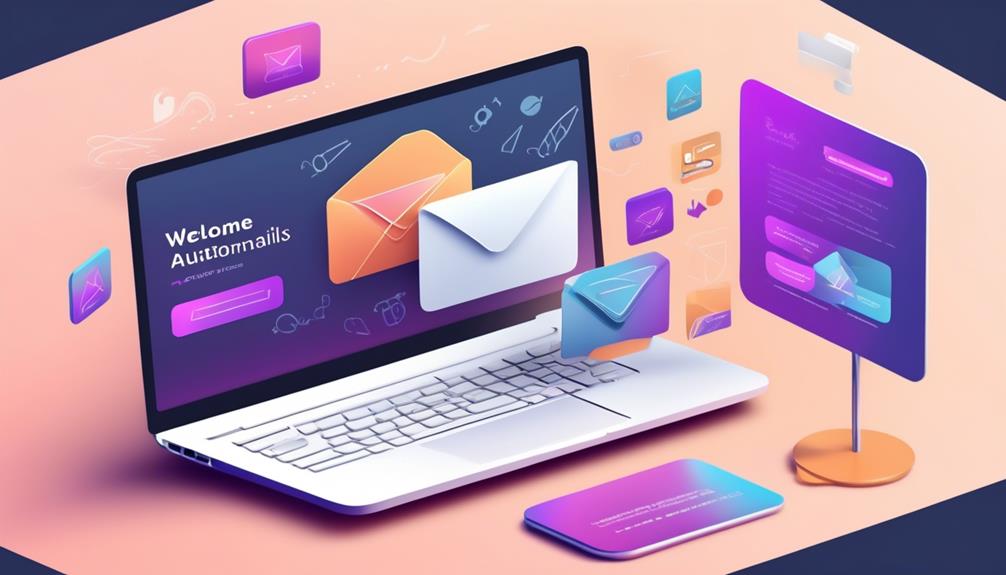
Crafting a compelling welcome email is essential for establishing a strong initial connection with subscribers. When creating welcome emails as part of our email automation strategy, we focus on certain key elements to ensure effectiveness:
- Personalization: Tailoring the welcome email to address the subscriber by name and incorporating details based on their interests or previous interactions.
- Clear Value Proposition: Communicating the unique value that the subscriber can expect from being part of our email list.
- Call to Action: Prompting the subscriber to take a specific action, such as exploring our website, signing up for a webinar, or engaging on social media.
- Mobile Optimization: Ensuring that the welcome email is optimized for various devices, especially mobile, to guarantee a seamless experience for all subscribers.
- Feedback Mechanism: Providing a way for subscribers to share their preferences or provide feedback, enabling us to further personalize their experience.
Promotional Emails
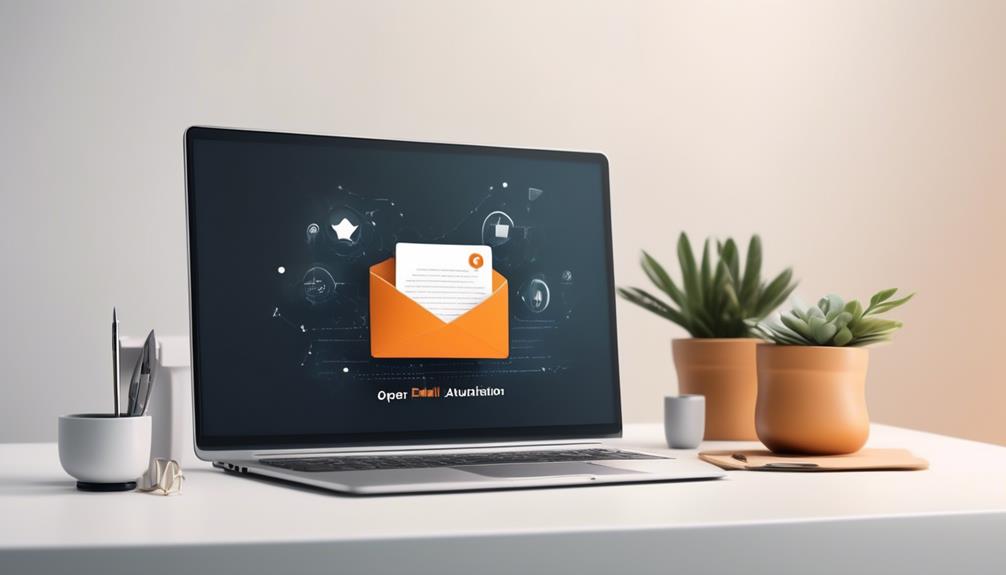
Promoting products, services, events, or special offers through targeted promotional emails can significantly boost customer engagement and drive marketing campaigns effectively. When using email automation, it's crucial to create personalized and engaging content to maximize the impact of promotional emails. Compliance with relevant laws and regulations, such as CAN-SPAM in the United States, is essential to ensure the legality of promotional email campaigns. Tracking and analyzing the performance of promotional emails is also vital for optimizing future campaigns.
| Key Elements for Effective Promotional Emails | ||
|---|---|---|
| Personalization | Engaging Content | Compliance with Laws and Regulations |
| Tailoring emails to reflect the recipient's preferences and behaviors. | Crafting compelling content that captivates the audience. | Ensuring adherence to legal requirements for email marketing. |
Promotional emails play a pivotal role in driving customer engagement and promoting products or services effectively. Through the use of email automation, businesses can harness the power of personalized content to reach targeted audiences and maximize the impact of their marketing campaigns.
Cart Abandonment Emails
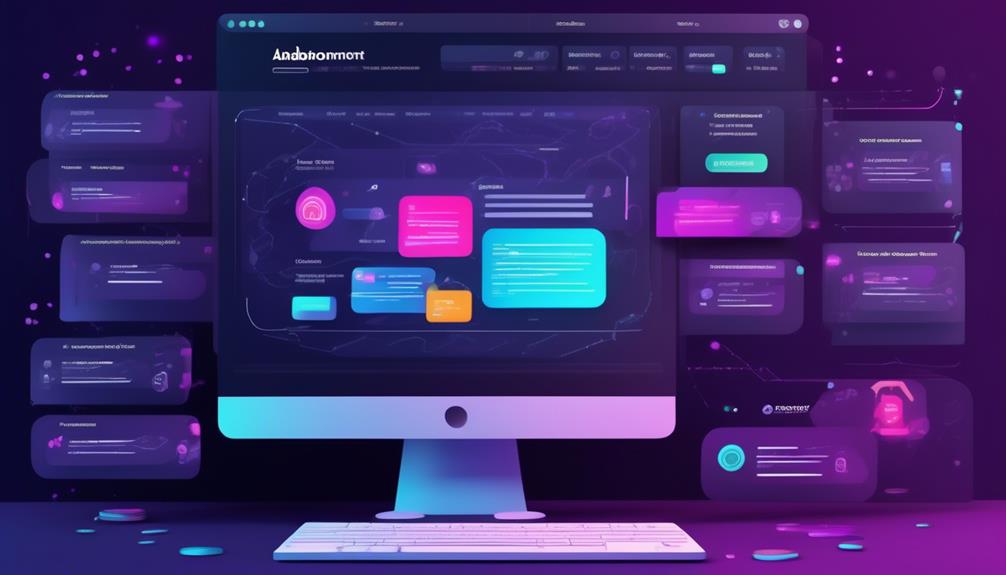
Discussing the strategies for recovering abandoned carts through automated emails is a crucial aspect of e-commerce marketing. When it comes to cart abandonment emails, several key tactics can be employed to maximize their effectiveness:
- Personalized Recommendations: Including personalized product recommendations based on the user's browsing and purchase history can entice them to return to their abandoned cart.
- Limited-Time Offers: Creating a sense of urgency through limited-time offers or discounts can motivate users to complete their purchase promptly.
- Compelling Subject Lines: Crafting attention-grabbing subject lines that highlight the abandoned items and convey a sense of urgency can increase the email open rates.
- Clear Call to Action: Ensuring that the email includes a clear and prominent call to action, such as 'Complete Your Purchase' or 'Return to Your Cart,' can guide users back to their abandoned carts.
- Optimal Timing: Sending cart abandonment emails within a specific window after the abandonment occurs, such as within 1-2 days, can significantly impact their effectiveness.
In the realm of clickup email automation, mastering the art of crafting compelling cart abandonment emails is essential for driving conversions and maximizing revenue opportunities.
Post-Purchase Feedback Emails
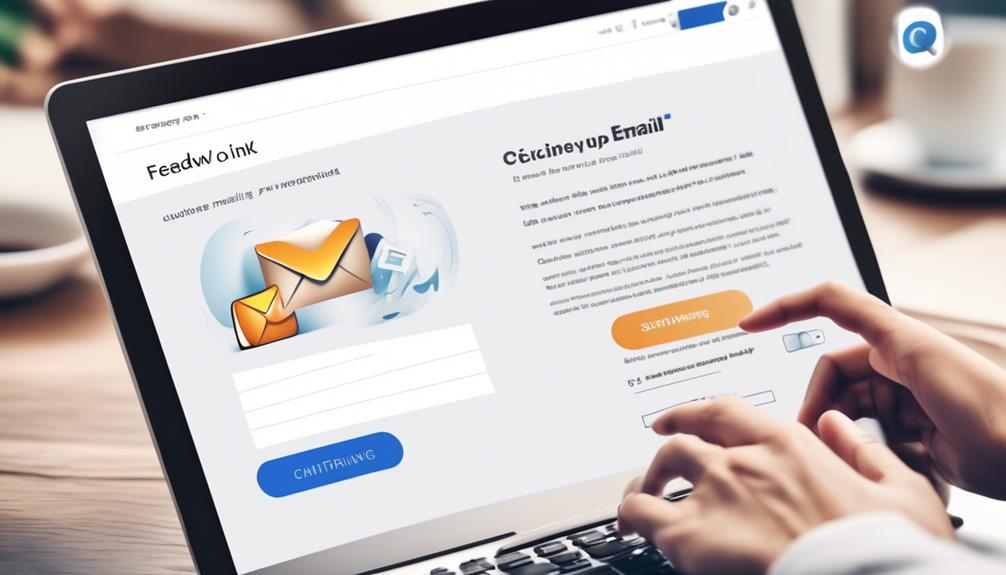
After a customer completes a purchase, we initiate the process of gathering valuable insights by sending out Post-Purchase Feedback Emails. These emails play a crucial role in our clickup email automation strategy, as they provide an avenue for customers to share their experience and satisfaction levels.
By including a survey or direct questions about the purchase experience, we aim to gather specific and actionable feedback that can help us improve our products and services. The insights obtained from these Post-Purchase Feedback Emails are invaluable for enhancing customer satisfaction and loyalty.
Additionally, they provide us with the necessary data to make informed decisions that contribute to business growth. Leveraging Post-Purchase Feedback Emails as part of our clickup email automation approach allows us to continuously refine our offerings and ensure that our customers receive exceptional value.
Ultimately, the goal is to use this feedback to drive improvements that resonate with our audience and strengthen our position in the market.
Stock Replenishment Emails
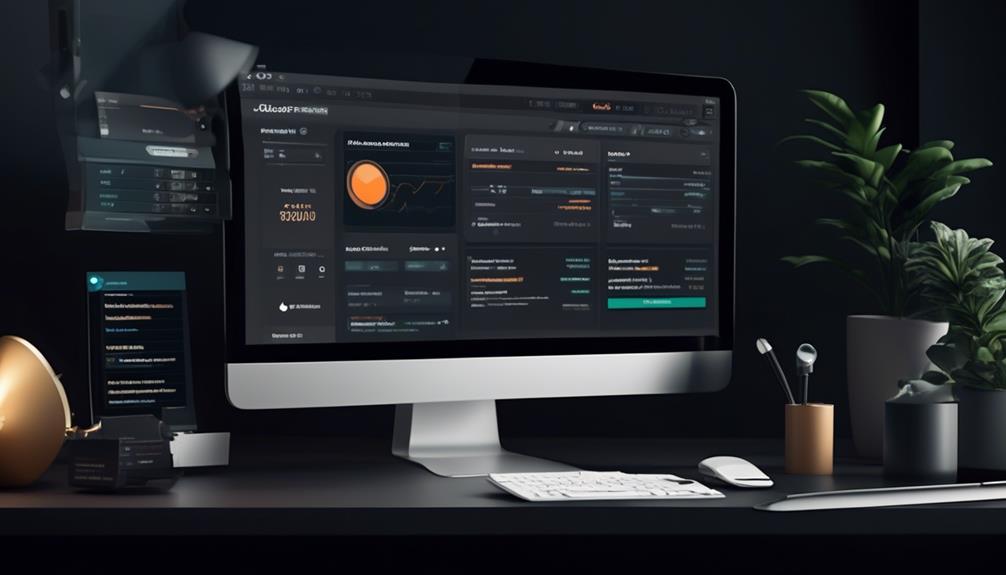
Stock replenishment emails play a vital role in our email automation strategy. These automations are indispensable for engaging customers and driving sales. When a product is back in stock, these emails not only update customers but also present them with special promotions or discounts, encouraging them to make a purchase. By triggering these emails based on inventory levels, we can effectively keep our customers informed and interested in our offerings.
Utilizing stock replenishment emails can also help us streamline our inventory management and improve overall customer satisfaction.
- Promptly informing customers about product availability
- Presenting enticing offers and promotions
- Engaging customers and driving sales
- Streamlining inventory management
- Improving customer satisfaction
These emails are a crucial aspect of our email automation strategy, allowing us to maintain a proactive approach in keeping our customers informed and interested in our products.
How Does Clickup Email Automation Compare to Outlook Email Automation?
ClickUp email automation streamlines processes, making it a popular alternative to the traditional Outlook email automation. With ClickUp, users can easily set up and automate Outlook email tasks, eliminating the need for manual intervention. This creates a more efficient workflow and allows for greater productivity.
Re-Engagement Emails
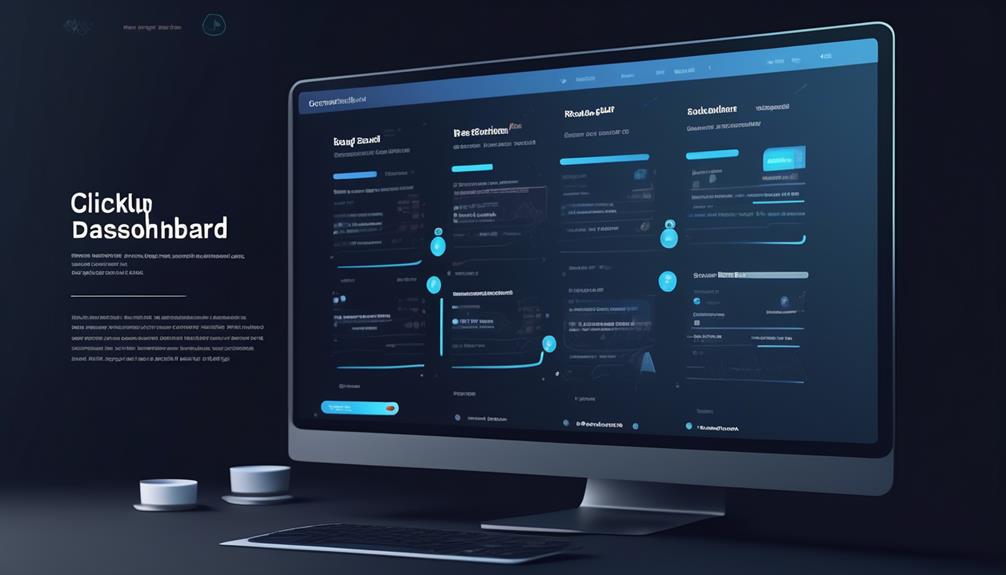
Re-Engagement emails are a powerful tool for reconnecting with inactive subscribers and reigniting their interest and engagement with our brand. These emails serve as a strategic way to bring back disengaged customers by providing them with compelling content, special offers, and personalized updates.
Through Clickup email automation, we can effectively analyze customer behavior and segment our audience to tailor re-engagement emails that specifically target inactive subscribers. By crafting attention-grabbing subject lines and visually engaging content, we can significantly increase the likelihood of recipients opening and interacting with our re-engagement emails.
It's crucial to monitor the performance of these emails and make data-driven adjustments to optimize their effectiveness. We can leverage insights gained from monitoring to continuously improve our re-engagement email strategies and achieve better results.
With Clickup email automation, we've the tools to create and manage impactful re-engagement campaigns that effectively bring back inactive subscribers and reignite their interest in our brand.
Frequently Asked Questions
Can I Automate Emails From Clickup?
Yes, we can automate emails from ClickUp. Enabling automation and Email ClickApps for the Workspace is necessary.
Variable field options allow for dynamic content in the subject or body of the email.
Troubleshooting may involve re-adding the email account and following troubleshooting steps.
Email automation with ClickUp streamlines email marketing workflow, increases efficiency, and reduces manual effort.
Can Clickup Be Used for Email Marketing?
Yes, ClickUp can be used for email marketing.
Our team has successfully utilized ClickUp's email automation features to streamline our email marketing efforts.
By enabling the necessary ClickApps and custom permissions, we were able to create automated email campaigns and incorporate dynamic content using variable field options.
This has allowed us to efficiently send targeted emails and track the progress of our marketing initiatives.
Does Clickup Have Automations?
Yes, ClickUp has automations. They streamline tasks, create efficiencies, and reduce manual effort. With automations, we can automate repetitive tasks, streamline our workflows, and save time for more important work.
They're available for Business Plans and above, and require the Automation and Email ClickApps to be enabled for the Workspace. Additionally, users in Business Plus and Enterprise Workspaces need admin permission to send emails.
Can You Automate Sending Emails?
Absolutely, we automate sending emails with ease. Our system seamlessly schedules and dispatches emails, saving valuable time.
Our robust automation tools optimize productivity and enhance efficiency.
Conclusion
In conclusion, ClickUp Email Automation has completely transformed the way we manage our email communications.
It's like having a personal assistant that takes care of all our email tasks, leaving us with more time to focus on other important aspects of our business.
With its user-friendly interface and customizable features, ClickUp Email Automation has truly made our email marketing workflow more efficient and productive.
It's a game-changer for anyone looking to streamline their email processes.
